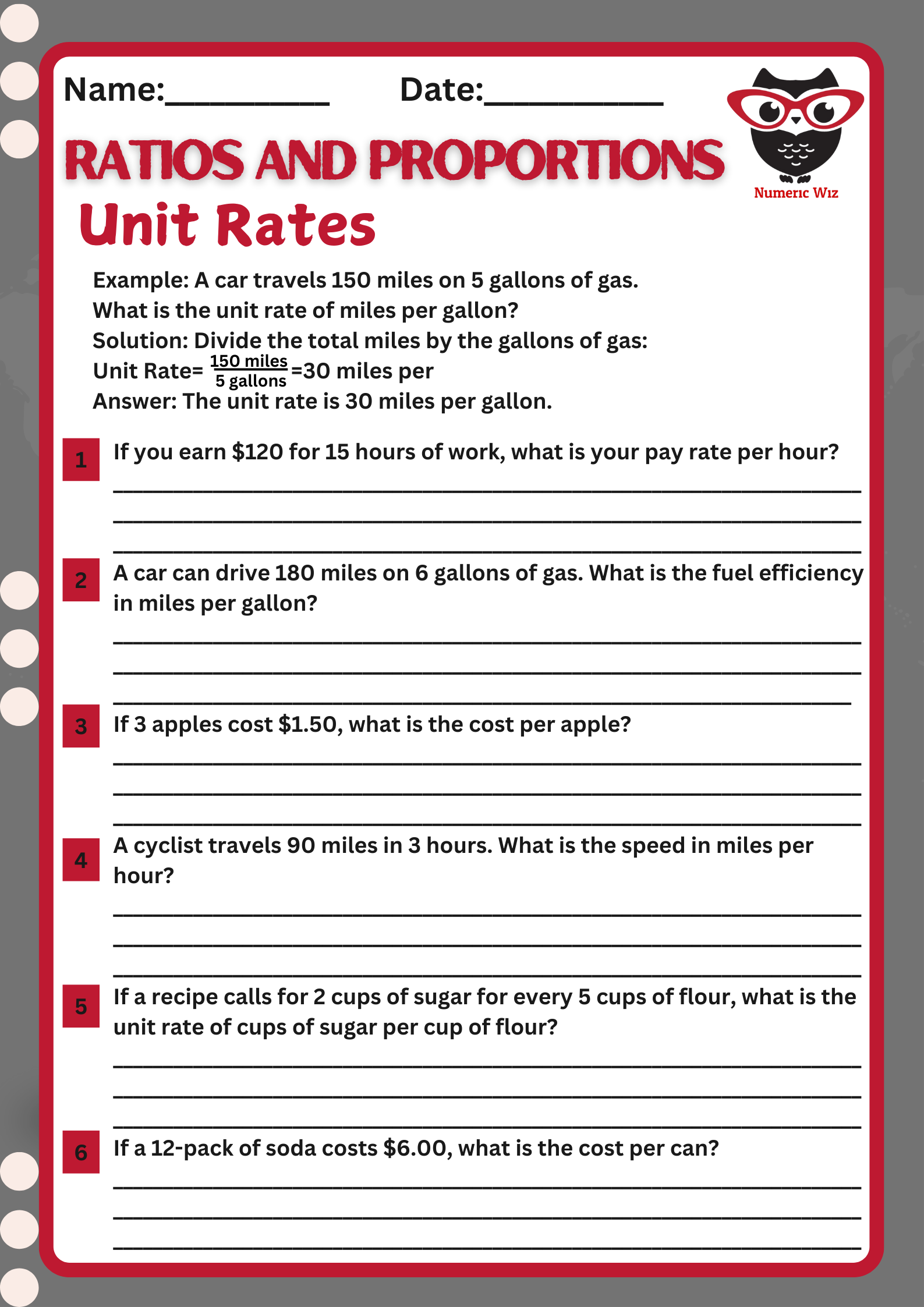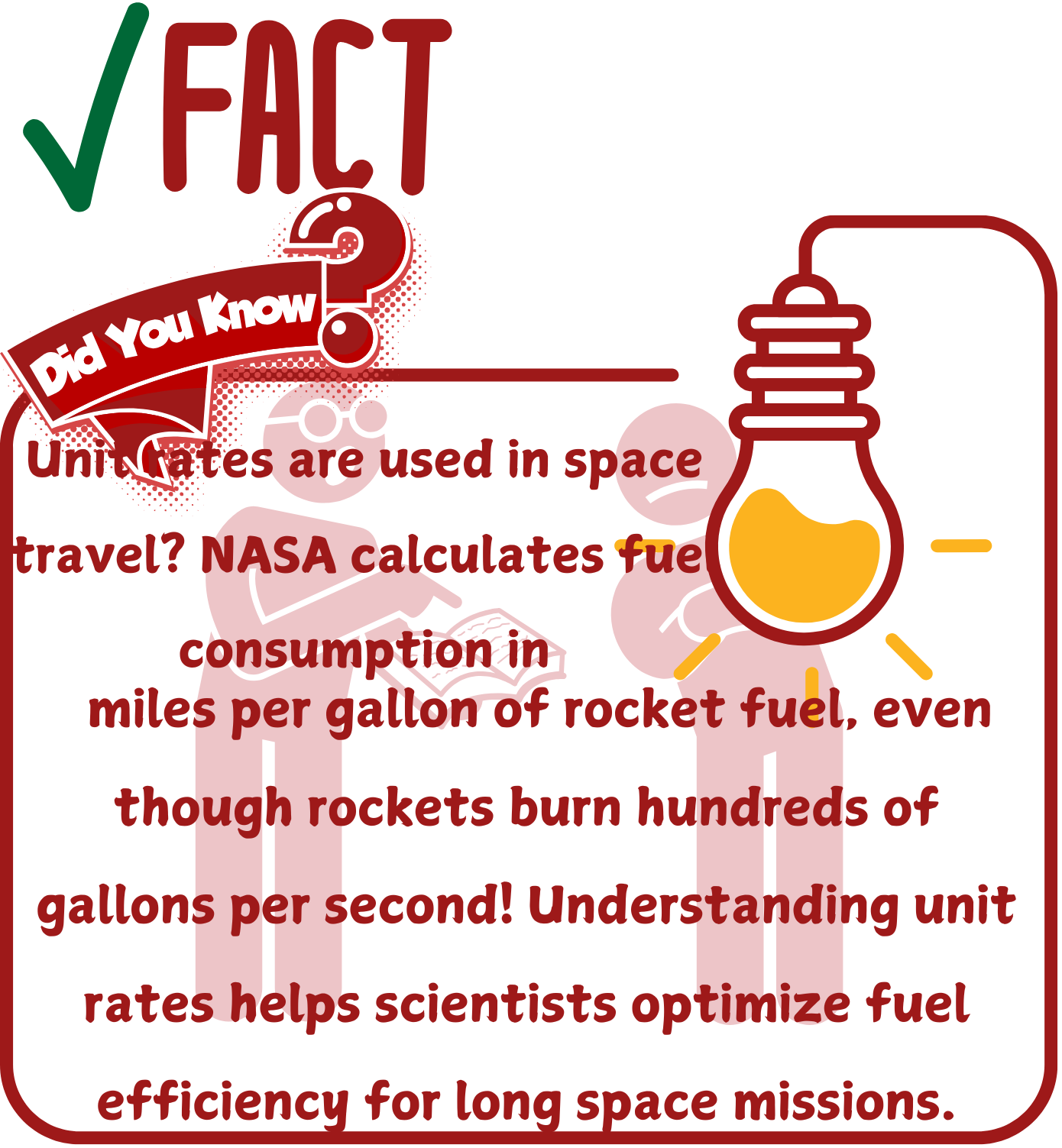
Unit rates are everywhere in our daily lives—from calculating speed to comparing prices at the grocery store. When working with ratios of fractions, unit rates help us understand how much of one quantity corresponds to a single unit of another. This is especially useful when dealing with lengths, areas, volumes, and other measurable quantities that may have the same or different units.
Compare prices (e.g., cost per ounce of juice or price per square foot of an apartment).
Measure efficiency (e.g., fuel consumption per mile or water usage per square meter).
Understand real-world ratios (e.g., speed in miles per hour or population density per square kilometer).

![]() Set up the ratio (e.g., area per cost, distance per time).
Set up the ratio (e.g., area per cost, distance per time).
![]() Divide the fractions (multiply by the reciprocal of the denominator).
Divide the fractions (multiply by the reciprocal of the denominator).
![]() Simplify to get a unit rate that is easy to interpret.
Simplify to get a unit rate that is easy to interpret.
Example 1: Unit Rate with Same Units
A rectangular garden has an area of 5/8 square meters and a width of 1/4 meters. To find the unit rate (length per 1 meter of width):
5/8 ÷ 1/4 = 5/8 × 4/1 = 20/8 = 5/2 = 2.5
So, for every 1 meter of width, the garden is 2.5 meters long.
Example 2: Unit Rate with Different Units
A car travels 3/2 miles in 3/4 hours. To find the speed (miles per hour):
3/2 ÷ 3/4 = 3/2 × 4/3 = 12/6 =2
The car is traveling at 2 miles per hour.
Now that you've seen how to calculate unit rates with fractions, try solving problems involving cost per unit, speed, and area comparisons. The more you practice, the easier it gets!
For a limited time
